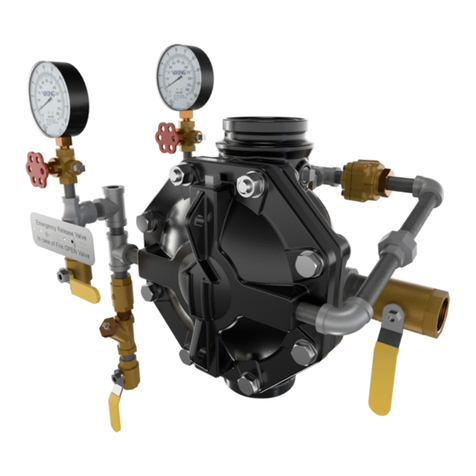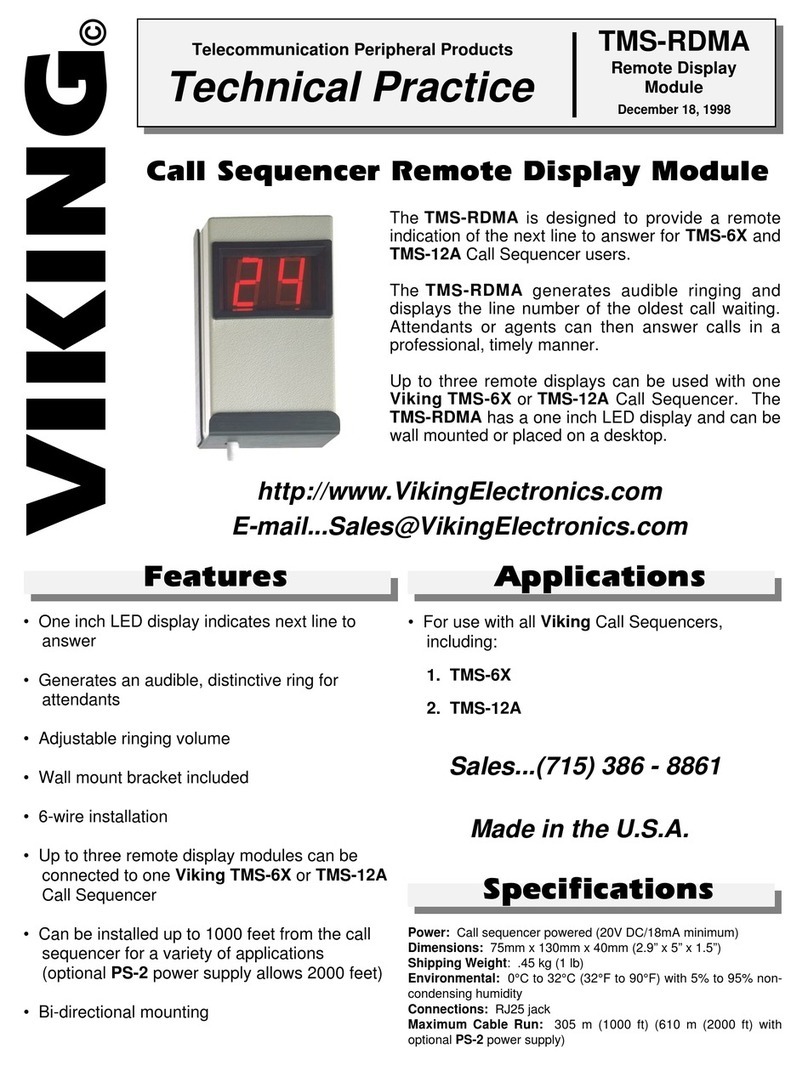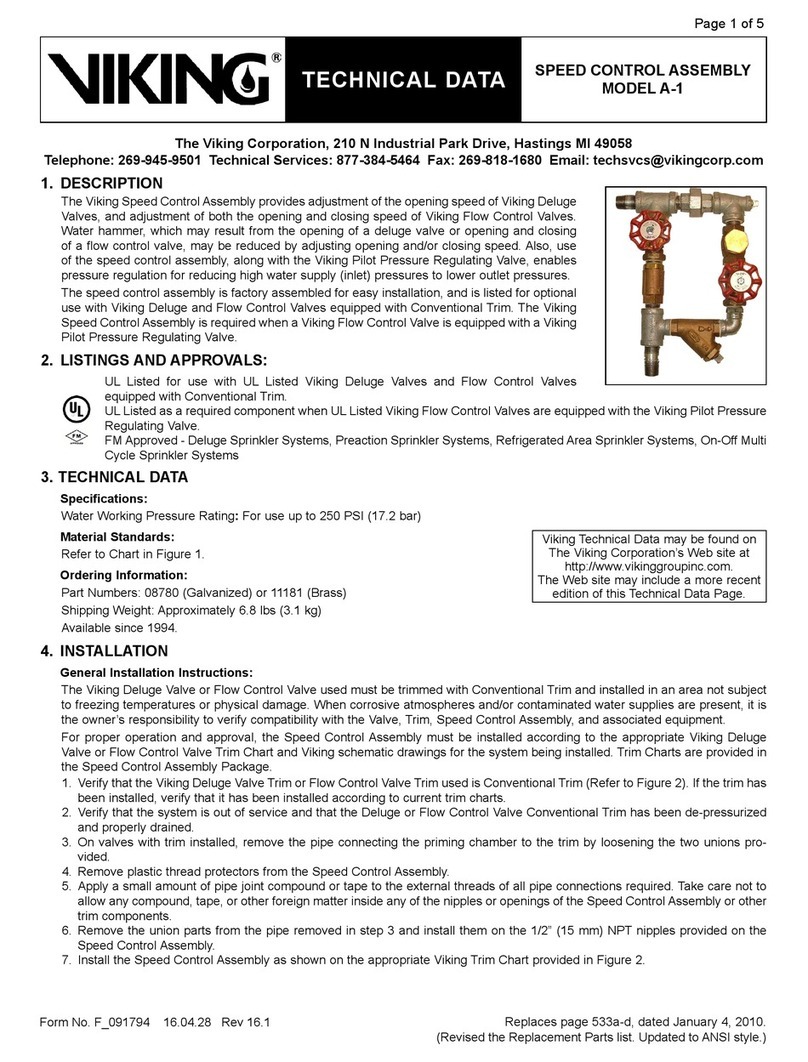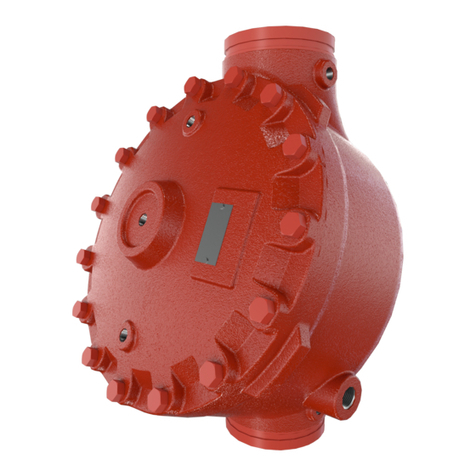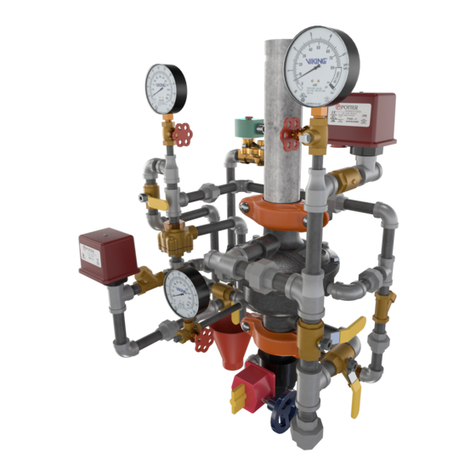
TECHNICAL DATA
3” MODEL G-3000P
DOUBLE INTERLOCK PREACTION
WITH ELECTRIC/PNEUMATIC RELEASE
The Viking Corporation, 210 N Industrial Park Drive, Hastings MI 49058
T
elephone:
269-945-9501
T
echnical
Services:
877-384-5464
Fax:
269-818-1680
Email:
[email protected]Page 8 of 12
Form No. F_011610 18.10.25 P65
6. INSPECTION AND OPERATIONAL TEST
NOTICE: THE OWNER IS RESPONSIBLE FOR MAINTAINING THE FIRE PROTECTION SYSTEM AND DEVICES IN PROPER
OPERATING CONDITION. It is imperative that the system is inspected and tested on a regular basis in accordance with NFPA 25.
The frequency of the inspections may vary due to contaminated water supplies, corrosive water supplies, corrosive atmospheres, as
well as the condition of the air supply to the system. For minimum maintenance and inspection requirements, refer to NFPA 25. In ad-
dition, the Authority Having Jurisdiction may have additional maintenance, testing, and inspection requirements that must be followed.
Viking does not require internal inspection of the valve as part of routine inspection and testing. Internal maintenance is generally only
required for valve repairs and internal component replacement.
WARNING: Any system maintenance that involves placing a control valve or detection system out of service may eliminate the re
protection capabilities of that system. Prior to proceeding, notify all Authorities Having Jurisdiction. Consideration should be given to
employment of a re patrol in the affected areas.
A. Low Air Pressure Alarm Test: (Refer to Figure 5)
Quarterly testing of low air alarms is recommended.
To Test Sprinkler System “Low Supervisory Air” Alarm:
1. To prevent operation of the G-3000P Valve and filling the system with water during the test, DO NOT operate the electric
detection system during test. Consider closing the main water supply control valve.
2. Fully open the sprinkler system test connection.
3. Verify that low air alarms operate within an acceptable time period and continue without interruption.
4. Close the test connection.
5. Establish recommended pneumatic supervisory pressure to be maintained. Refer to section 4. INSTALLATION.
6. Reset the system release control panel. Alarms should stop.
When testing is complete, return the system to service following steps 1 through 8 below.
B. Full Flow Trip Test: (Refer to Figure 5)
Performance of a trip test is recommended annually during warm weather. Consider coordinating this test with operation testing
of the detectors.
CAUTION! PERFORMANCE OF THIS TEST WILL CAUSE THE G-3000P VALVE TO OPEN AND THE SPRINKLER SYSTEM TO
FILL WITH WATER.
To Trip Test the Electric / Pneumatic Double-Interlocked Preaction System:
1. Notify the Authority Having Jurisdiction and those in the area affected by the test.
2. Trip the G-3000P Valve by performing option “a” or “b” below.
a. Operate the electric release control system according to the manufacturer’s instructions, and open the sprinkler system
test connection.
b. Operate the emergency release valve.
3. The G-3000P Valve should open, filling the sprinkler system with water. Water flow alarms should operate.
4. Verify that there is adequate flow from the sprinkler system test valve.
When Trip Testing is complete:
5. Perform steps 1 through 13 of section 4.F. PLACING THE SYSTEM IN SERVICE to return the system to service.
6. Notify the Authority Having Jurisdiction and those in the affected area that testing is complete.
7. MAINTENANCE
Viking does not require an internal inspection of the G-3000P Valve unless there is an indication of damage to internal components.
A. Taking the system out of service: (Refer to Figure 5)
1. Close the water supply main control valve, placing the system out of service.
2. Open the flow test valve located in the base of the G-3000P Valve.
3. Close the air (or nitrogen) supply to the preaction system piping.
4. Close the priming valve.
5. Relieve all pressure from the preaction system piping. If the system has operated, open main drain valve to allow the system
to drain completely.
B. Removing the Cover from the Valve Body: (Refer to Figures 1 & 11)
1. Remove the 3” grooved coupling from the top of the G-3000P Valve.
2. Remove the 12” section of pipe directly above the G-3000P Valve.
3. Break the 1/2” coupling between the air pressure gauge and air pressure supervisory switch.
4. Remove the 1-1/4” grooved coupling below the main drain.
